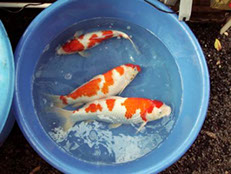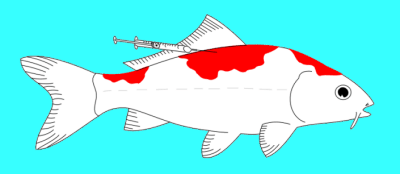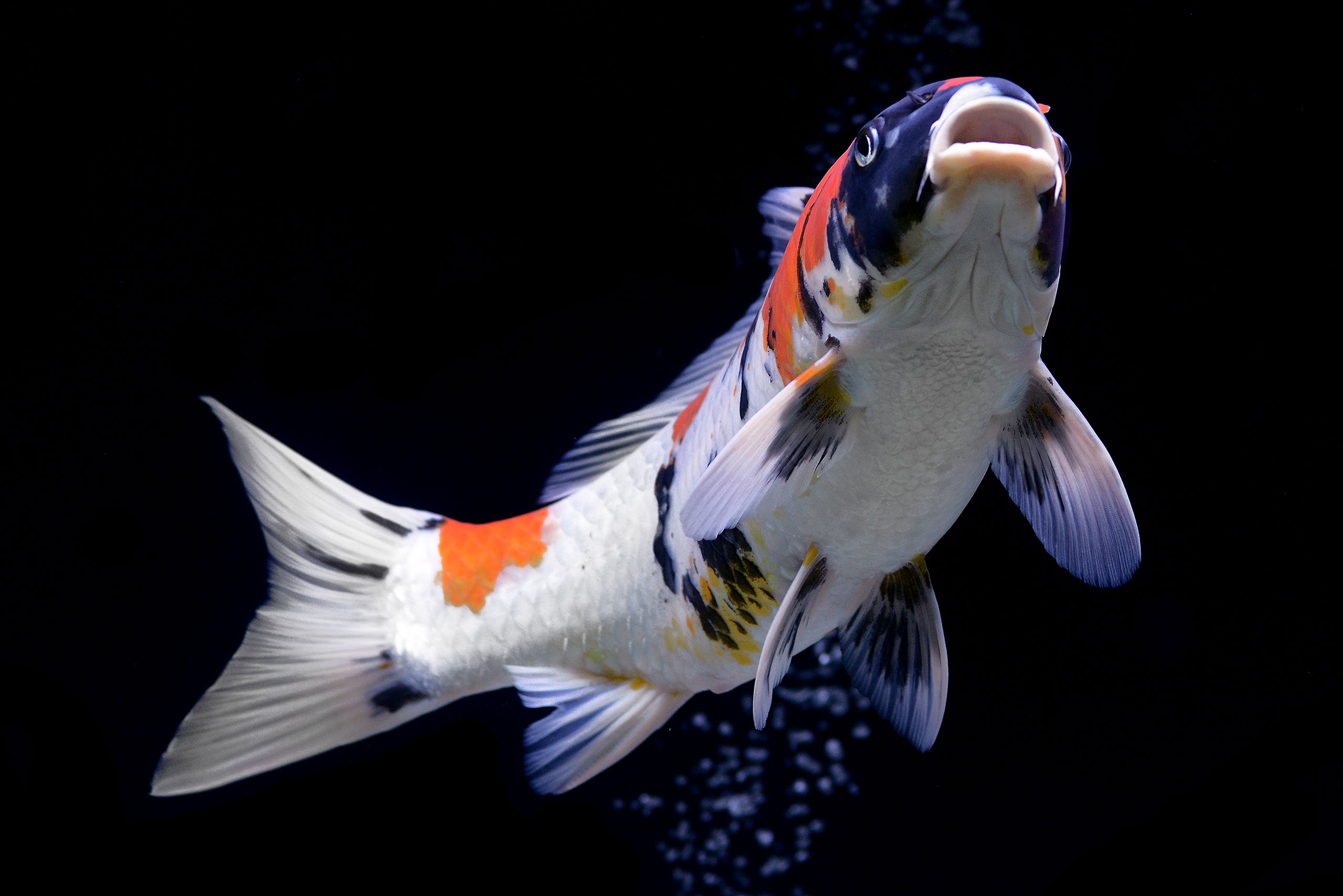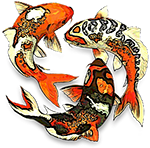Injecting Your Fish
by John Howell
People often laugh when I tell them that I inject my fish. They laugh harder when I say, “Of course I put them to sleep first.” The truth is that every Koi Hobbyist will one day need to inject their fish either with Antibiotics or with a Vaccine. Now, you could pay me to come to your house and inject your fish for you, but the procedure is actually quite simple.

 Here are the steps I go through. If you are a little scared, try it first on a fish that is either very cheap, or too sick to save.
Here are the steps I go through. If you are a little scared, try it first on a fish that is either very cheap, or too sick to save.
- Prepare two holding tanks. One with heavy oxygen & one with anesthetic.
- Have all injections and materials prepared before catching the fish.
- Catch the fish to be treated and put them in the oxygenated tank.
- Put 1 or 2 fish into the anesthetic tank at a time.
- Keeping the sleeping fish in the water, take the time to examine its body fully. The underside can hide ulcers or other problems that are not detectable while it is swimming free in the pond. Any ulcers, anchor worms, etc. should be treated at that time.
- Hold the fish with one hand gently against the side of the tank in front of you. The fish should be upside down and partially submerged.
- ip2Quickly make the injection (explained later).
- Return the fish to the oxygenated tank until it is revived. Do not keep the fish under anesthetic any longer than absolutely necessary. Too long, and the gill function will cease, causing the fish to suffocate. Don’t worry that the fish appears dead, as long as you still see gill movement, it is alive.
- Return the revived fish back to the pond. The fish may take 10 to 15 minutes to revive in the oxygenated tank, depending on the strength of the anesthetic and the particular fishes response.
Injection Descriptions
There are three injection sites on a Koi; Intraperoteneal (IP), Intramuscular (IM), and Intravenous (IV). IP is the most common & the most effective method. Antibiotics or vaccines injected into the peritoneal cavity are absorbed into the fish’s system slowly as opposed to oral medication which will mostly pass straight through.
IM is the second choice for injection and is used if the Koi has ulcers that have broken through to the body cavity. Any medication injected into the peritoneal cavity in a fish of this condition could drain out through the ulcer. The draw back to IM is that the muscle tissue of the fish will contract and force some of the injected material to be squeezed back out the injection site. IM can sometimes leave visible welts from trauma to the muscle tissue.
Although I have seen photos of IV injection, I have never done it myself. Articles always warn against this type of injection and reserve it for experts and then only on really large fish. The problem is the ability to actually hit the vein which runs through the center of the fish. It is performed on the under side of the fish near the tale.
Injection Directions
The actual IP injection is performed by injecting in the abdomen at a 45 degree angle between the caudal fins and the anal vent. The needle points towards the head of the fish and enters approximately 2/3 of the way from the anal vent, 1/3 back from the caudal fins (see Drawing 1). Insert the needle quickly, plung smooth but quick, & withdraw the needle. You may fill some resistance from cartlidge below the skins surface. If the fish is large and the cartlidge difficult to penetrate, you can insert the needle slightly to one side of the center line. You can not avoid hitting a scale, so don’t waist time searching around with the needle. Scales will grow back if lost and since you are injecting on the underside of the fish, any temporary damage will not be visible.

The beauty of the IP injection performed under sedation is that the fish does not thrash about. Without the thrashing, you will not lacerate an organ. In addition, with the fish relaxed & upside down, the organs tend to settle out of the way a bit. You might still puncture an organ, but with the fine needle pushed in and pulled out cleanly, there will be little danger. I have never lost a fish from injecting this method.
 The IM injection is performed with similar needle angle and direction, but it is in the muscular tissue along and to the side of the dorsal fin (see Drawing 2). With a muscular injection, you must keep the needle in the muscle tissue and press the plunger as you with draw the needle giving room for the fluid to enter. Because of this, the needle must be inserted deeply.
The IM injection is performed with similar needle angle and direction, but it is in the muscular tissue along and to the side of the dorsal fin (see Drawing 2). With a muscular injection, you must keep the needle in the muscle tissue and press the plunger as you with draw the needle giving room for the fluid to enter. Because of this, the needle must be inserted deeply.
fishimI suggest that the first time you try any of these injections, you ask someone with experience to help you. It is always possible to hurt or kill the fish if the injection is not done properly.











